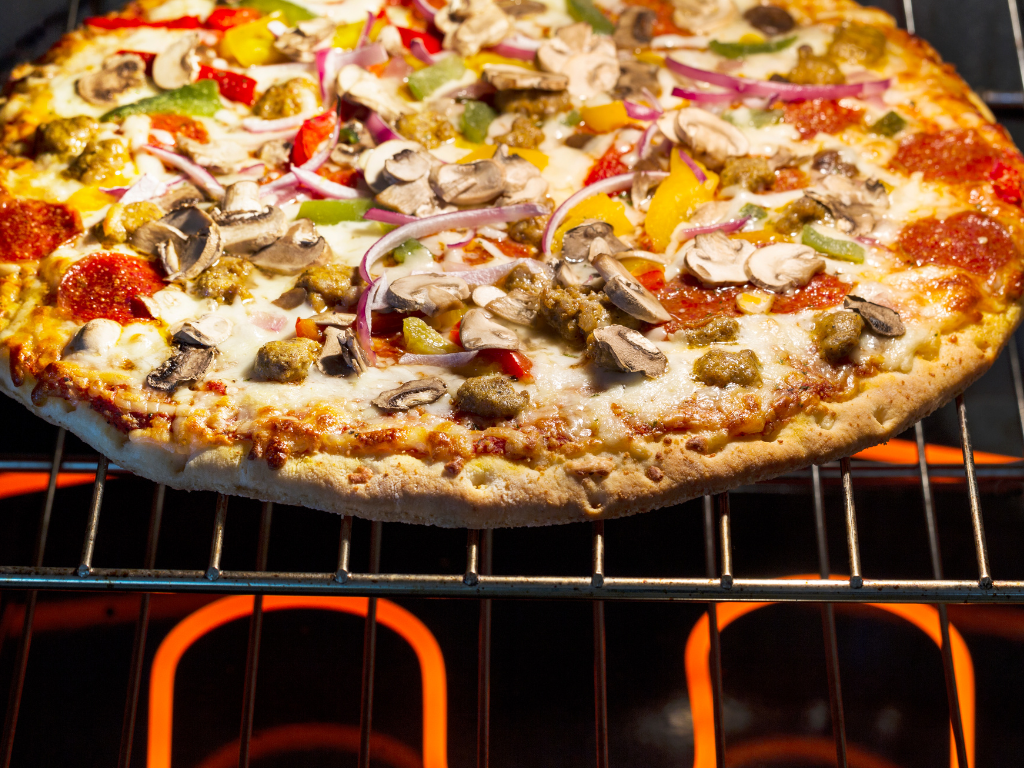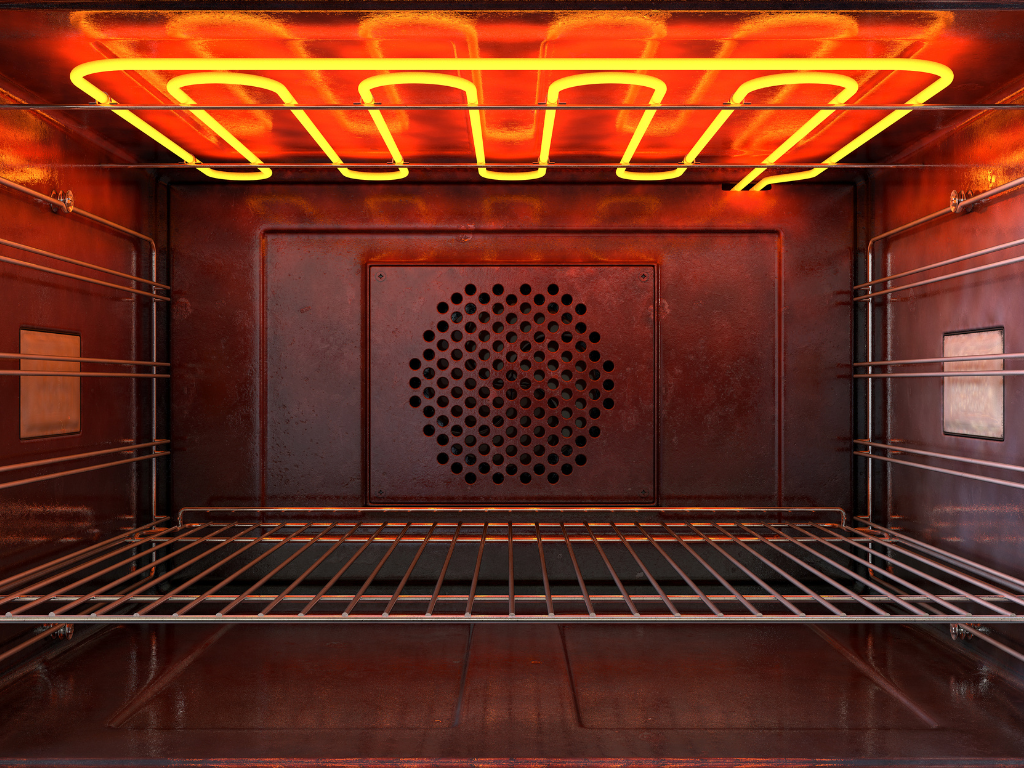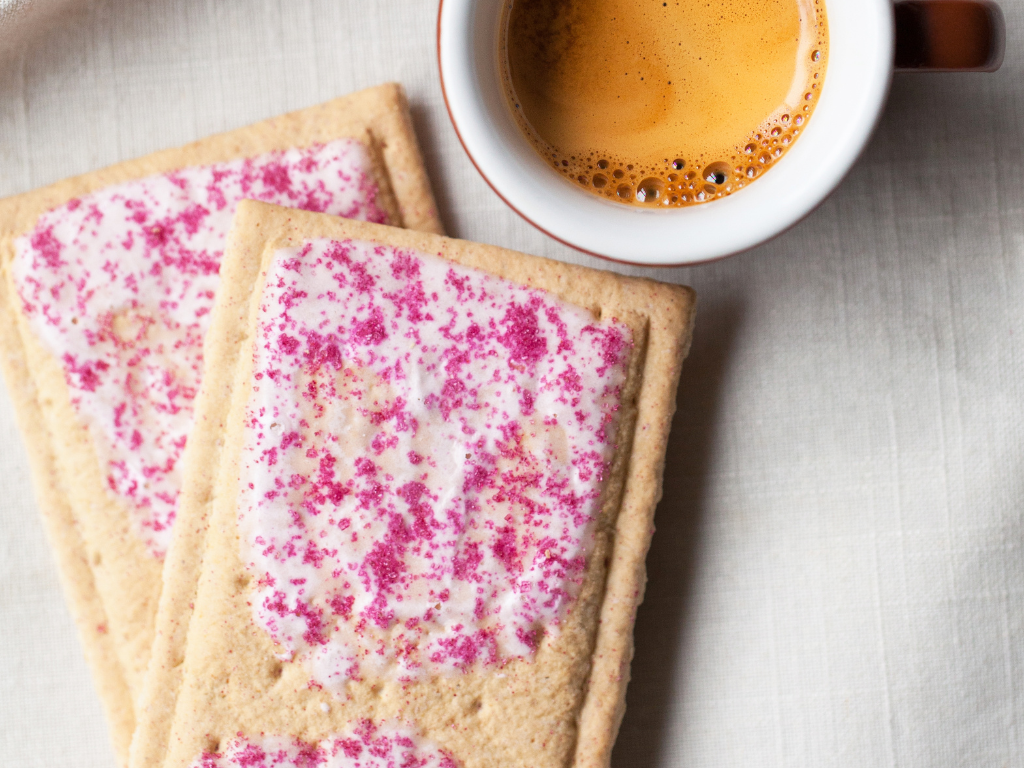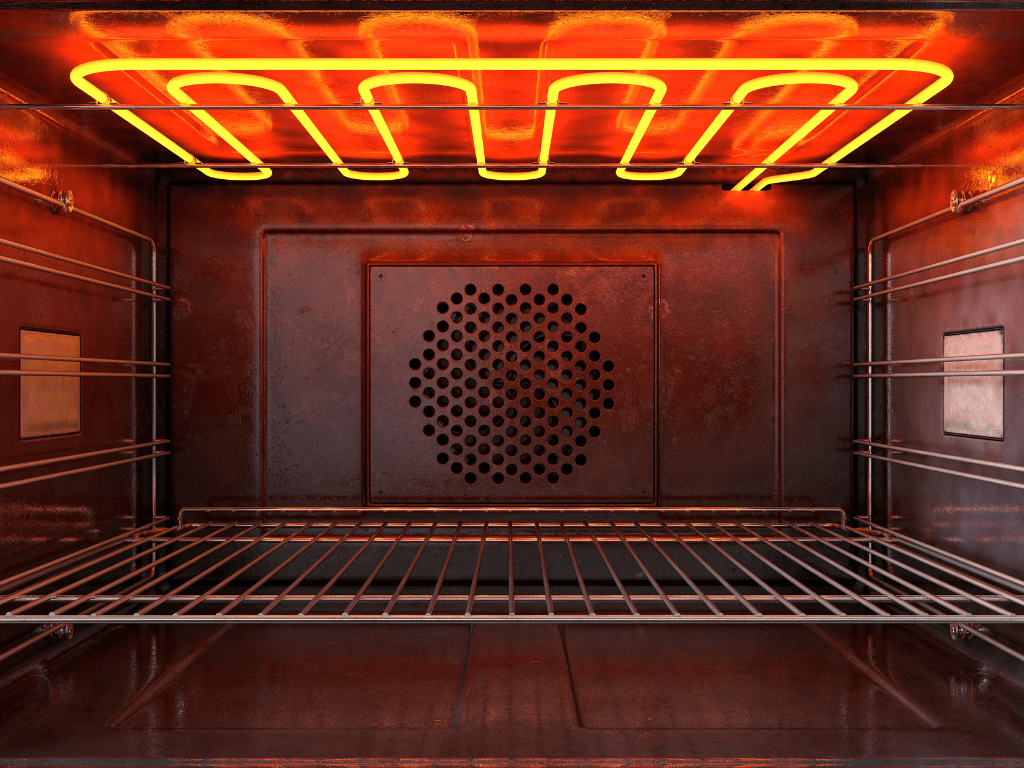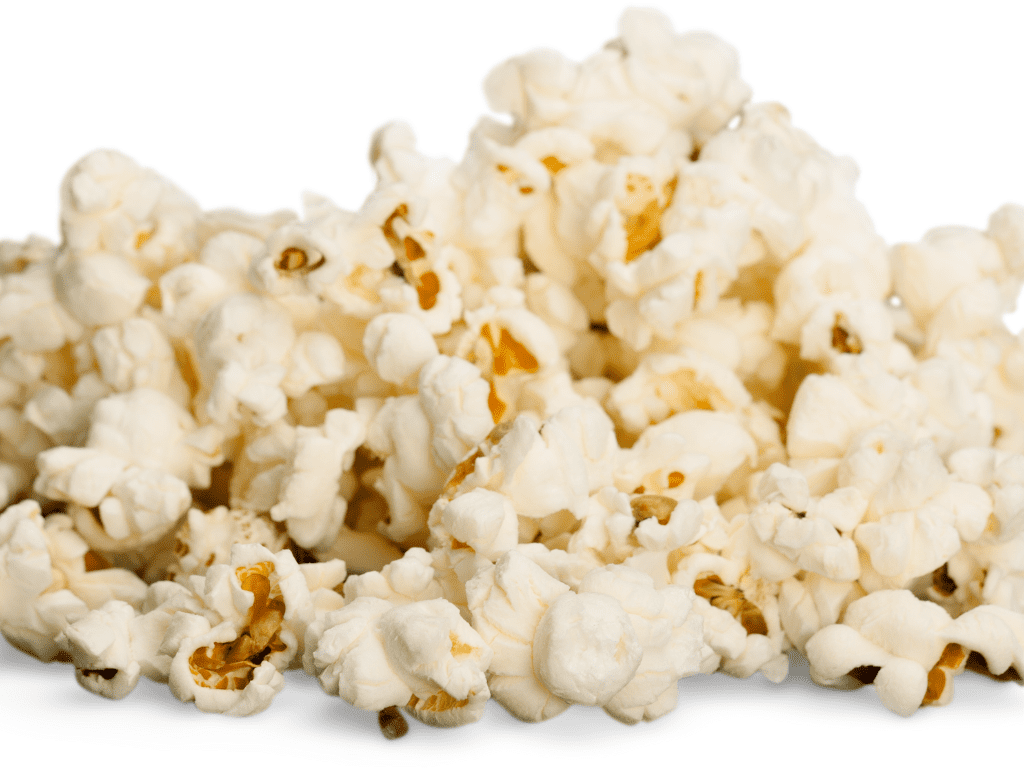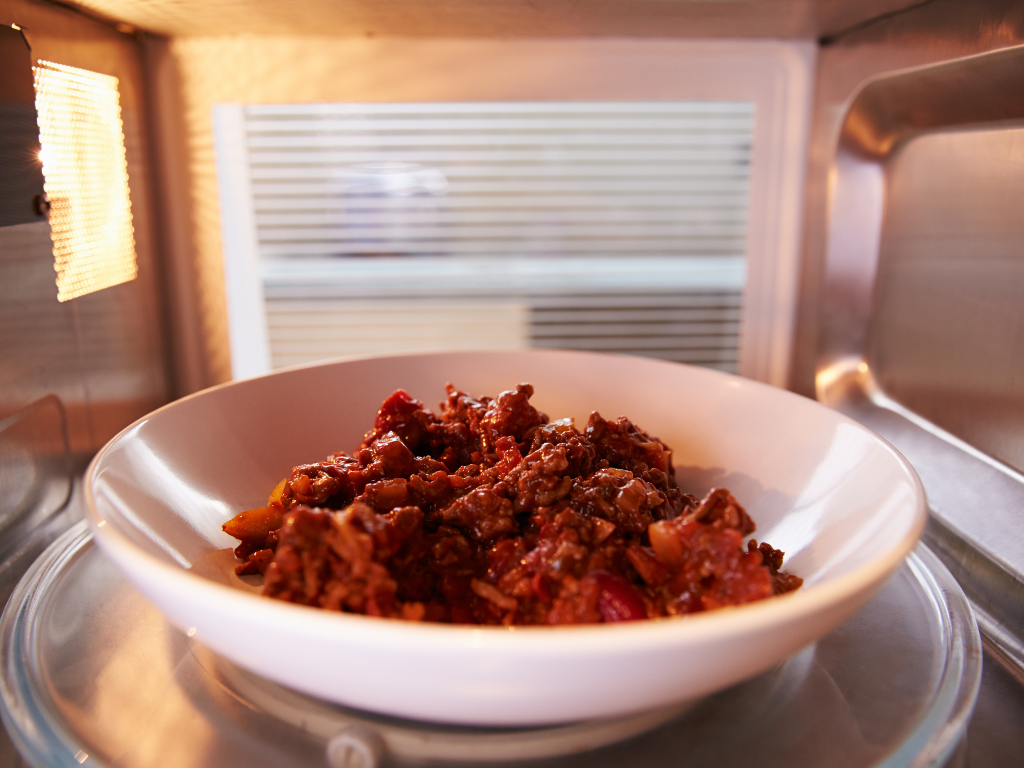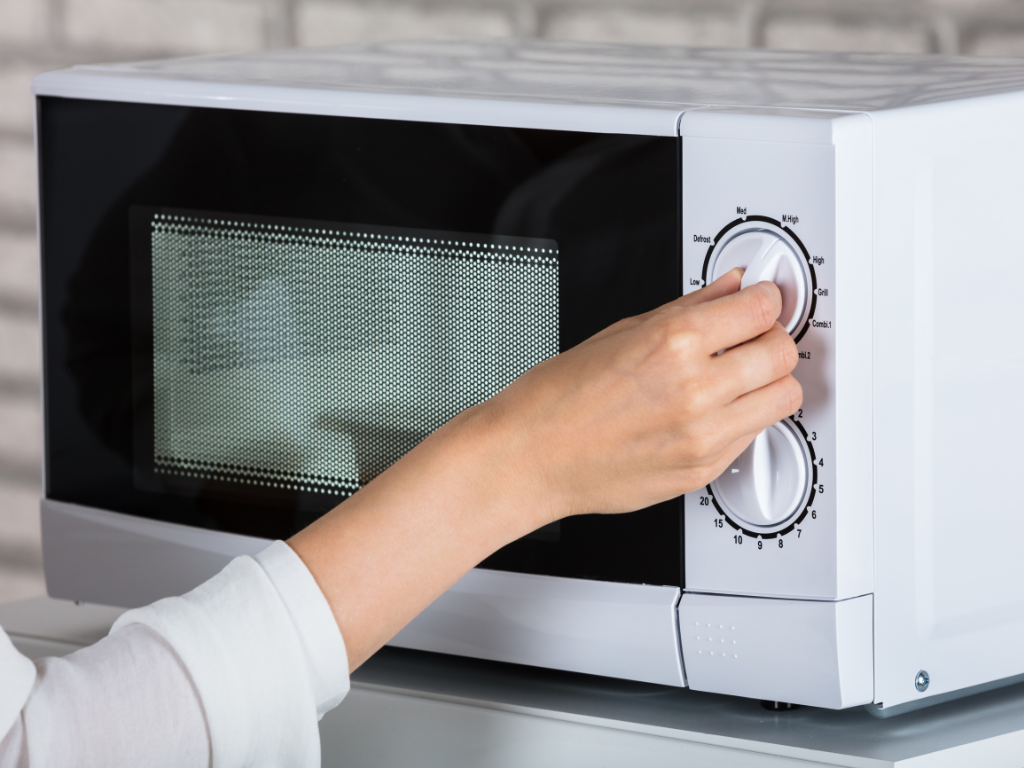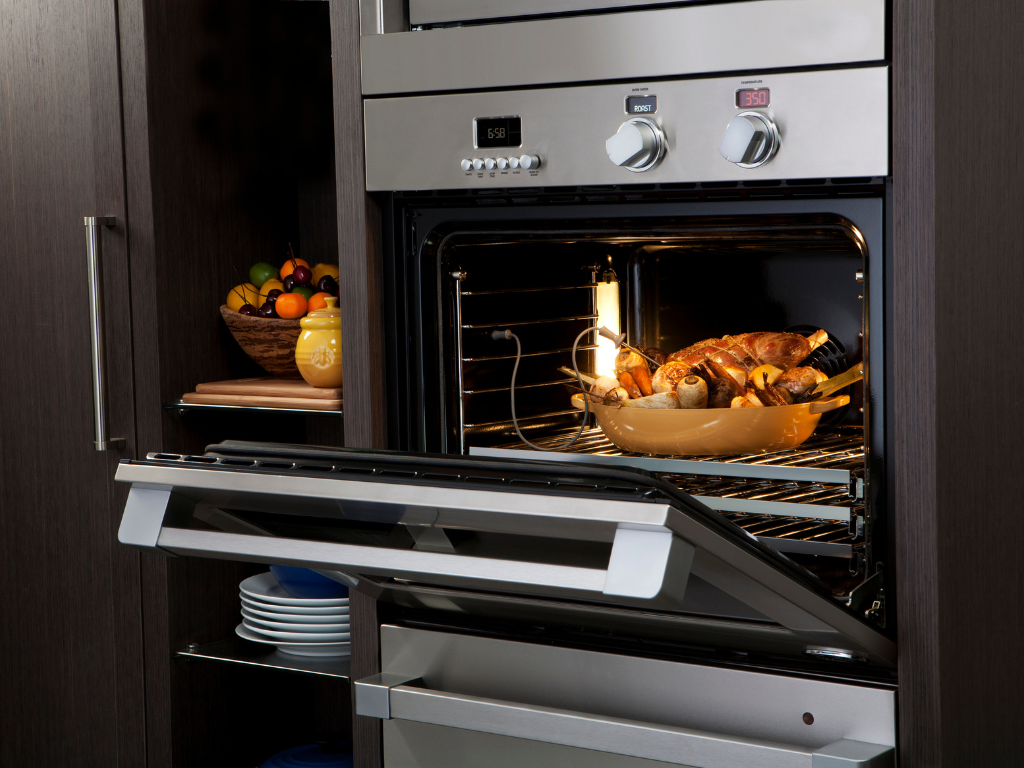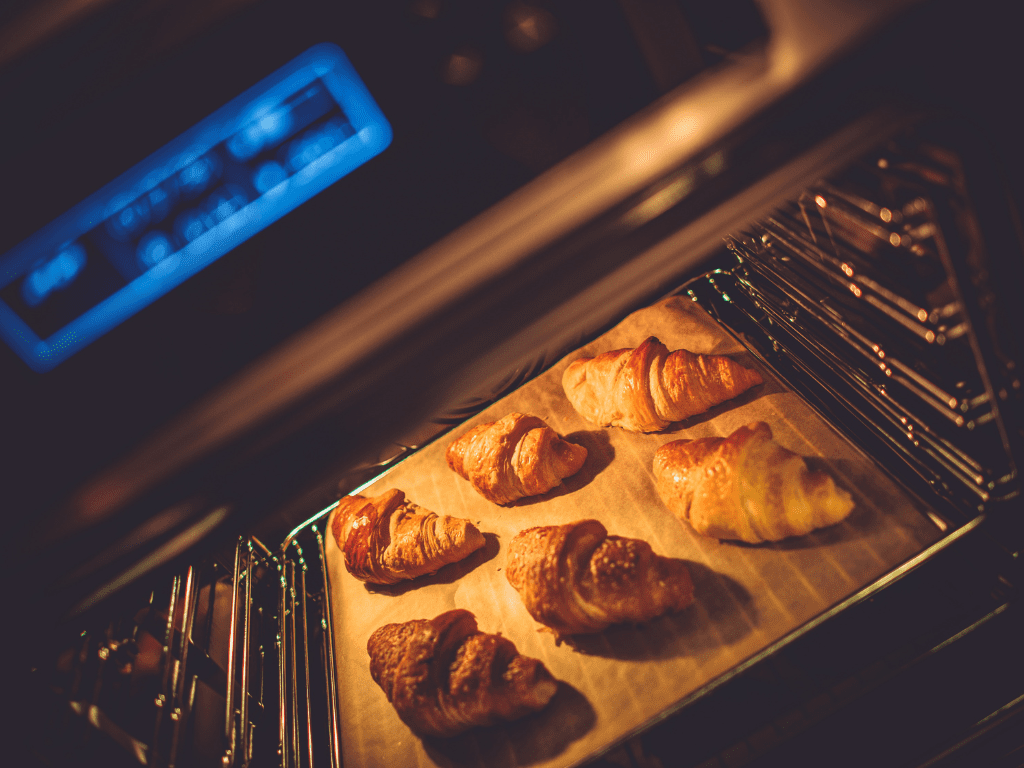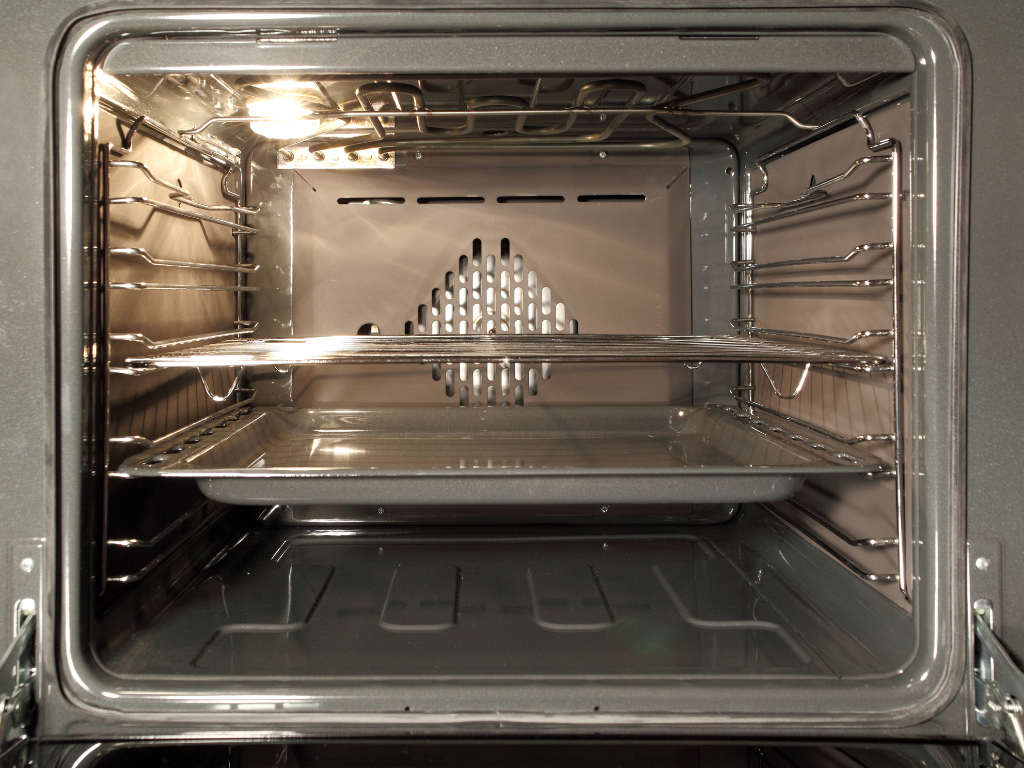Key Takeaway:
- Understanding broiling: Broiling is a cooking method that utilizes the high heat of an oven’s broiler to cook food quickly and with a crispy exterior. It is a great way to prepare meat, fish, and vegetables.
- Temperature and equipment: It’s important to understand broiler temperature settings, which can range from 350°F to 550°F. Choosing the right broiler pan can also affect the outcome of your dish, as well as positioning it at the right distance from the broiler element.
- Broiling different types of food: Best practices for broiling meat include selecting the right cut, marinating for better flavor and moisture, and maximizing flavor and texture with spices. Broiled chicken and fish can be perfectly cooked by monitoring the internal temperature and using marinades or rubs. Vegetables and other dishes can also benefit from the high heat of broiling.
Searching for the ideal way to make amazing dishes? Say farewell to guesswork! Broiling is a powerful technique – discover the ideal broil temperature to guarantee yummy dishes each time! Hello delicious results!
Understanding Broiling
Understanding broiling is important to achieve perfectly cooked, flavorful meats and vegetables. Broiling is a method of cooking where food is placed on a metal rack in a broiler pan, which is then placed in the top position of an oven, closest to the heating element. The food is exposed to high heat, which creates a caramelized exterior while maintaining the moistness of the interior.
To achieve optimal results when broiling, it is important to consider the cut, thickness, and desired doneness of the meat or vegetables. The broiling temperature typically ranges from 400-500 degrees Fahrenheit and the rack position should be adjusted to control the level of heat exposure. For thicker cuts of meat such as beef steak or pork chop, it is recommended to use the lower breast rack position while thinner cuts such as hamburger patties or sliced vegetables can be placed on the higher top rack position.
To monitor the cooking progress, it is important to keep a close eye on the food and adjust the cooking time or rack position as needed. Some cookware such as a cast iron skillet or a shallow metal pan can be used for broiling, but it is important to avoid a dish that is too deep as it will prevent proper air circulation, resulting in uneven cooking or burning.
Some personal suggestions for broiling include seasoning the meat or vegetables before broiling with herbs or spices, flipping the food halfway through cooking to ensure even browning, and using a drip pan to catch excess grease or juices. Leftovers can be easily reheated in the broiler for crispy and cheesy dishes or simply to add a warm touch to previously cooked food. Maytag ovens and ranges are a great choice for broiling with their conventional, convection, gas, and electric options available for various cooking needs.
Definition of Broiling and How It Works
Broiling is a fast and simple method of cooking food in the oven. It involves positioning the food on the highest oven shelf, closest to the heating element, and using high heat to cook it quickly. The broil temperature typically ranges from 500°F to as hot as possible, depending on the oven.
To broil effectively, it is important to use a broiling pan or wire rack that allows air to circulate under the food. This helps prevent burning and ensures even cooking. When broiling meat, always use tongs or a spatula to flip it over once halfway through the cooking time so that both sides are evenly browned.
One advantage of broiling is that it produces an attractive brown color and crispness on the surface of foods such as steak, hamburgers, chicken cutlets, thighs, drumsticks or wings. Fish filet also turn out with a nicely crisped exterior when they are broiled. Vegetables can also be broiled for added flavor and tenderness – zucchini, peppers, onions and tomatoes drizzled with olive oil takes less than 5 minutes under a high-heat broiler.
Broiling’s quick cook times may leave some wondering if all parts of their dish will be cooked thoroughly. To ensure proper doneness when using this cooking technique follow these guidelines: if you’re unsure if your hamburger patty or thigh is fully cooked check its internal temperature with an instant-read thermometer; if you’re baking something else entirely make sure you know its recommended cook time and start checking it periodically until it reaches your desired level of doneness.
Fun Fact: Did you know? The word ‘oven’ comes from Old English “ofen” which was borrowed from Latin ‘furnus’, which eventually came into Proto-Germanic via Gothic “faurns”; and today we have multiple advanced ovens with varied features making our lives simpler!
Broil vs Bake: Whats the Difference?
When it comes to cooking, there are two popular methods: broiling and baking. While both use heat to cook food, they differ in several ways.
- Broiling is cooking directly under the heat source while baking is cooking surrounded by hot air.
- Broiling is great for browning the tops of dishes while baking is ideal for cooking dishes thoroughly.
- Most ovens have a separate broiler component that heats from the top or bottom, while ovens come designed to bake with heat coming from all sides.
- Baking takes longer than broiling because it requires time to preheat the oven fully before putting food inside.
- Broiling is easy and quick, perfect for single-serving meals or small batches.
Broiling suits best when you need to cook meat at high temperature, but when it comes to garlic bread or melting cheese on dishes, baking works better.
So why do they call it an oven? The word “oven” originated from the Latin word “incoquere,” which means “to cook.” Ovens have been around since ancient times and were essential for people who wanted to cook their meals without relying on open flames.
Interestingly, broil vs. bake has become quite controversial over time. Many forums discuss repairing issues related to oven models like Whirlpool stove f2 error, LG oven f9 error, or Frigidaire oven f10. People inquire about issues like how much does it cost to run an oven for 2 hours? How do I change my oven from Celsius to Fahrenheit? What happens if you turn off self-cleaning oven early?
Each person decides which one of the techniques works better according to what they want to prepare. Still, today’s ovens offer many different features like a simmer temperature setting or oven cleaner options that make the cooking process more ordered and time-efficient. Ultimately, it depends on what you are looking to prepare and how many people you are cooking for.
Temperature and Equipment
The broil temperature refers to the heat setting used when cooking with the broiler function on your oven. Broiling involves cooking food at high heat, with the heat source coming from above the food rather than below it. This method can be used to quickly cook or brown meats, melt cheese on top of dishes, or crisp up breads and vegetables.
To use the broiler function on your oven, preheat it to the recommended broiling temperature (usually around 500°F), and adjust the rack so that the food is positioned near the top of the oven. Broiling can be done in a conventional oven or a toaster oven with a broil function.
It’s important to use the right equipment when broiling to ensure even cooking and avoid accidents. Use a broiler pan, which is specifically designed to allow excess fat to drip away from the food while cooking. Avoid using glass or ceramic dishes, which can shatter under the high heat of broiling. Additionally, use tongs or a spatula to handle the food, as it will be very hot.
As a personal suggestion, consider experimenting with different broiling times and temperatures to achieve your desired level of doneness or crispness. For example, broiling thicker cuts of meat at a lower temperature for a longer time may yield a more evenly cooked result. And for dishes such as nachos or pizzas, consider broiling in stages – first melting the cheese on a low heat, then cranking up the broiler to crisp up the toppings. By playing around with the broil temperature and equipment, you can create delicious and satisfying meals.
Understanding Broiler Temperature Settings
To better understand this topic, let’s take a look at a table showing different broiler temperatures and their corresponding cooking times.
| Temperature (°F) | Cooking Time |
|---|---|
| Low (450-500) | 15-20 minutes |
| Medium (500-550) | 10-15 minutes |
| High (over 550) | 5-10 minutes |
So if you’re broiling chicken, for example, you would want to use a high temperature for a short time to get a nice crisp char on the outside while keeping the inside juicy and tender.
When it comes to broilers, there are two main types: gas and electric. Electric broilers tend to take longer to preheat but are more consistent in heat distribution. Gas broilers tend to be quicker to preheat but require more attention in monitoring heat distribution.
Additionally, the distance between the food and the heating element also plays a role. For example, if you place your food too close to the heating element when using high heat, it may burn easily.
Understanding your specific broiler’s quirks is also important. Some may have hot spots that need to be avoided while others may produce inconsistent heat altogether. Trial and error with your specific equipment is often necessary.
A friend of mine learned this lesson the hard way when he hosted a dinner party and attempted to use his newly purchased broiler without properly understanding its settings. The result was an unevenly cooked meal that left his guests unimpressed.
Types of Broiler Pans and Their Effectiveness
TYPES OF BROILER PANS AND THEIR EFFECTIVENESS
When it comes to broiling, the right equipment can make a world of difference. One essential tool is a broiler pan. But with so many different types available, it can be hard to know which one is best for your needs.
To help you out, we’ve put together a table comparing the various types of broiler pans and their effectiveness:
| Type of Broiler Pan | Description | Effectiveness |
|---|---|---|
| Stainless Steel | Durable and easy to clean; can handle high heat | Very effective |
| Cast Iron | Retains heat well for even cooking; can leave grill marks | Effective |
| Non-Stick Coated | Prevents food from sticking; easy to clean but may not last as long as other types | Moderately effective |
| Disposable Aluminum | Convenient for one-time use or easy cleanup; may not provide even cooking or strong enough support for heavier dishes | Least effective |
Stainless steel is perhaps the most versatile and widely used type of broiler pan. Its durability, ease of cleaning, and ability to withstand high temperatures make it an excellent choice for grilling everything from fish to vegetables. Cast iron also has its advantages, particularly when it comes to retaining heat and providing even cooking.
Non-stick coated pans are another option that many people prefer because they prevent food from sticking and are relatively easy to clean. However, they may not last as long as other types of pans.
Disposable aluminum pans offer convenience in terms of easy cleanup but may not provide the most even cooking or sturdy enough support for heavier dishes.
One thing worth noting is that broiling times and temperatures vary depending on what you’re cooking and what type of pan you’re using. For example, thinner stainless steel pans may require less preheating time than thicker cast iron pans.
Speaking of effectiveness – I remember trying to cook steak in a disposable aluminum broiler pan once, and let’s just say it didn’t turn out great. The pan was flimsy and couldn’t handle the weight of the meat, which ended up cooking unevenly. Lesson learned – sometimes it’s worth investing in a more durable option.
How to Broil in the Oven
How to Broil in the Oven
Broiling is a cooking method that involves cooking food under direct heat, using the top heating element of your oven. It’s a great way to cook food quickly and get a nice, crispy finish on top. To broil in the oven, you’ll need to turn the broiler on and adjust the temperature to the desired level. You’ll also need to position your food correctly, so that it’s close enough to the heating element to cook, but not too close that it burns.
When broiling in the oven, it’s important to use the right kind of cookware. Broiling is a high-heat cooking method, so you’ll want to use oven-safe dishes that can handle the heat. Avoid using glass dishes or dishes with plastic handles, as these may not be able to handle the high temperature. Instead, use stainless steel or cast iron pans, which are oven-safe and can handle the heat of the broiler.
One reason why broiling is so effective is because it relies on direct heat, which cooks food quickly and can create a delicious caramelization on the surface of the food. This high heat also helps to lock in the flavors of the food, resulting in a more flavorful dish. However, it’s important to keep an eye on your food while broiling, as it can cook very quickly and may burn if left unattended.
If you’re looking to improve your broiling skills, here are a few suggestions that may help:
- First, try using a broiling pan or a wire rack to elevate your food, which can help the heat circulate more evenly and result in a more evenly cooked dish.
- Second, experiment with different broil temperatures to find the right level for your particular oven and the type of food you’re cooking.
- Finally, consider adding a marinade or seasoning to your food before broiling, to enhance the flavor and create a more delicious dish.
Preparing Your Food for Broiling
- Choose your food: Broiling works best with thin cuts of meat, seafood, and vegetables.
- Season your food: Apply spices or marinades to enhance flavor.
- Preheat your oven: Set it to broil temperature and make sure the oven rack is in the correct position for broiling.
- Prep your baking sheet: Cover it in foil or use a broiling pan to catch any drippings and ensure easy cleanup.
- Arrange your food on the sheet: Place smaller items in a single layer and larger items spaced apart.
- Place the sheet in the oven: Make sure it’s positioned under the broiler element.
To further maximize the effectiveness of preparing your food before broiling, consider other factors such as how thick your cut is or how well-done you like your meat cooked. Be sure to check on your food periodically throughout the broil process, as cooking times may vary depending on what you are cooking.
Properly preparing your food for broiling can have a major impact on its taste and tenderness while also allowing you to cook quickly and conveniently without sacrificing quality.
Don’t miss out on enjoying perfectly cooked meals — take time to properly prep before you start cooking with this simple six-step process that can transform home dinners into restaurant-quality feasts!
Positioning Your Dish for Optimal Broiling
- Adjust the oven rack to the top position available, as close as possible to the broiler element.
- Place a baking sheet or aluminum foil on the rack beneath the dish you’re broiling; this will catch any drippings and make cleanup easier.
- Lightly coat the dish with cooking spray or oil, particularly if you’re cooking meat, which tends to stick.
- If using a baking dish, choose one that’s relatively shallow and wide to ensure even browning.
- Place the dish in the preheated oven and keep an eye on it closely; because broiling occurs at such high temperatures, food can quickly go from perfectly browned to burnt.
When positioning your dish for optimal broiling, keep in mind that different foods may require slightly different approaches. For example, thick cuts of meat might benefit from being placed directly on a preheated cast-iron skillet rather than on a baking sheet, because this promotes more even cooking and crisping along with those desirable grill marks.
Another thing to keep in mind is that some ovens have slightly uneven heating patterns along their top racks; if you notice uneven browning while broiling, experiment by rotating your dish midway through cooking or moving it closer or further away from the broiler element.
One thing to note about Positioning Your Dish for Optimal Broiling is that it can be difficult at times to determine whether food is done without overcooking it; some meat thermometers are designed specifically for use during broiling and can help you achieve perfect results every time.
In fact, many professional chefs rely heavily on precise temperature readings when broiling meats like steak and lamb chops. This technique ensures that they’re cooked exactly how they want them–whether rare, medium, or well-done–without any guesswork.
According to a True History story, many home cooks have been known to swear by certain tricks for achieving perfect broiling results. Some advocate placing a slice of bread in the bottom of the baking sheet to catch drippings and impart flavor; others suggest coating meat with a flavorful marinade before broiling to infuse it with extra moisture and taste.
Regardless of your preferred technique, taking the time to properly position your dish for optimal broiling is key to creating delicious and healthy dishes that cook up easily and quickly every time.
Monitoring the Broiling Process
Monitoring the broiling process is an essential aspect of cooking meat and vegetables to perfection. Without proper observation, your food can turn out undercooked, dry or overcooked which will only lead to disappointment. Therefore, it is necessary to understand the science behind broiling and how to monitor it effectively.
To help you become a pro at broiling, we’ve created a simple table that lists down the different factors you need to consider while monitoring the process. It’s vital to keep in mind that these elements may vary from dish to dish and therefore require you to adjust your monitoring techniques accordingly.
Factors:
| Elements | Monitoring |
|---|---|
| Temperature | Use a thermometer |
| Heat source location | Positioning food |
| Food thickness | Checking for doneness |
| Distance from heat source | Adjusting rack height |
| Broil time | Checking periodically |
Now that you’re familiar with what needs attention while broiling, let’s delve deeper into some of these factors. Temperature plays a crucial role in determining the final outcome of your dish. Using a thermometer ensures that inside temperature reaches safe levels and your meat cooks evenly throughout. Moreover, adjusting the distance from the heat source allows your food either tenderize or caramelizes depending on what type of texture is desired.
Timing is also critical when it comes to broiling. Overcooking may cause flavor loss whereas undercooking could mean risking illness from rare meat. By checking periodically, you can ensure timely results as timing usually depends on food thickness and weight.
Monitoring the broiling process accurately guarantees delicious results every time, instead of wondering whether you overcooked the chicken or if that steak is still raw in the center. Fear Of Missing Out (FOMO) factor kicks in after having learned such easy tricks for perfect cooking! Don’t miss out on becoming a master chef in your own kitchen.
Broiling Different Types of Food
Broiling is one of the most popular cooking techniques used to prepare a wide variety of foods from steaks and chops to vegetables and fruits. Broiling is a method that uses high heat from the top of an oven, typically under a heating element, to cook food quickly and efficiently. It’s a great way to prepare food that needs a crispy and browned finish, such as broiled salmon, chicken breasts, and cheese toast.
When broiling foods, there are a few key things to keep in mind. Firstly, the cooking time can vary depending on the type and thickness of the food being cooked. Secondly, it’s important to place the food on the correct rack position in the oven, usually a few inches away from the broiler element. Lastly, it’s crucial to monitor the food’s cooking progress closely to avoid burning.
If you’re new to broiling or have had some difficulties with it in the past, there are a few pro tips to keep in mind. Preheating your broiler is crucial to achieving the best results, as it ensures that the food cooks evenly and quickly. Another key tip is to not overcrowd the pan or baking sheet, as this can prevent the desired browning effect from occurring. Finally, it’s important to avoid using fattier cuts of meat when broiling, as this can cause flare-ups and uneven cooking.
Best Practices for Broiling Meat
When it comes to broiling meat, there are a few best practices that you should follow to ensure your meal comes out perfectly cooked and delicious. Here are some tips to keep in mind.
To begin with, set your broiler temperature based on the type of meat you’re cooking. For thinner cuts of meat, like steaks or pork chops, use a higher broil temperature setting. For thicker cuts, like roasts, use a lower temperature setting.
Creating a table can be an effective way to organize this information. Here’s an example:
| Type of Meat | Recommended Broil Temperature |
|---|---|
| Steak | High |
| Pork Chops | High |
| Roast | Low |
Another best practice is to prepare your meat properly before broiling. This can involve marinating it, seasoning it with salt and pepper, or coating it in breadcrumbs or other toppings. Be sure to also trim any excess fat from the meat beforehand so that it doesn’t flare up under the broiler.
When you do place the meat in the oven, make sure it’s positioned correctly under the broiler – usually on the top rack – and monitor its progress closely. Depending on the thickness of the cut and the desired level of doneness, you may need to adjust the distance between the meat and the heating element (use a broiler pan rack if required).
Finally, let your cooked meat rest for at least five minutes before cutting into it. This allows the juices to redistribute throughout before serving.
By following these best practices when broiling meat, you can achieve great results every time and impress everyone at dinner!
Perfecting Broiled Chicken and Fish
- First, preheat your broiler to high heat. This is crucial as it allows the food to cook properly and evenly without overcooking.
- Season your chicken or fish with salt, pepper, and any other desired spices such as garlic powder or paprika. It’s important to use dry seasonings so that the food doesn’t become too watery when broiling.
- Next, place the chicken or fish on a broiler pan or baking sheet lined with parchment paper. You may want to lightly oil the pan to prevent sticking.
- Finally, place the pan in the oven under the broiler element and broil for approximately 5-10 minutes depending on thickness until cooked through.
Perfecting Broiled Chicken and Fish takes some practice but once you get there it is worth it. The key is in achieving that perfectly charred exterior while still retaining juicy flavorful interior. A great tip for getting those beautiful grill lines on chicken or fish is by placing them diagonal on a wire rack before putting them under direct high heat which only come out after several minutes of heating from your oven.
Another suggestion would be marinating your protein in advance for at least an hour before broiling. This imparts flavor while also tenderizing meat so it does not become tough due to exposure of high temperature from broil settings.
Broiled Vegetables and Other Dishes
Broiled vegetables and other dishes are a popular choice for those who want to eat healthy and flavorful food. Broiling is a cooking method that involves high heat from an overhead source, typically the broiler in your oven. The intense heat creates a brown crust on the food, sealing in its natural juices and flavors.
When it comes to broiling vegetables, most varieties work well under the broiler. Broccoli, asparagus, green beans, mushrooms, peppers, and eggplant are all excellent choices. To ensure even cooking, cut your vegetables into uniform pieces and place them on a baking sheet lined with foil or parchment paper.
To add flavor to your broiled vegetables, you can drizzle them with olive oil or melted butter before placing them under the broiler. You can also season them with your favorite herbs and spices such as garlic powder, paprika, rosemary or thyme.
In addition to vegetables, there are many other dishes that can be broiled with delicious results. Fish fillets such as salmon or tilapia cook quickly under the broiler and stay moist and tender yet flaky inside. Chicken breasts can be seasoned with a marinade or dry rub before being placed under the broiler for crispy skin and flavorful meat.
If you have leftovers from dinner or takeout pizza that needs reheating, try putting it under the broiler rather than microwaving it. This will retain the crispness of the crust while creating a gooey melted cheese topping.
Overall, broiling is an easy way to prepare healthy meals at home without sacrificing flavor or texture. Keep in mind oven safety when using this cooking method by ensuring proper ventilation of gas ovens and avoiding leaving food unattended under the broiler.
Additional Uses of the Broiler
Broil temperature refers to the temperature at which food is cooked using the broiler function in an oven. The broiler function is used to cook foods quickly at high temperatures, resulting in a crispy exterior and moist interior. The broiler element in the oven emits intense heat, which is why broil temperature is higher than standard baking temperature.
Apart from cooking meats to perfection, the broiler function can be put to additional uses. One of them is making toast. Simply place sliced bread onto the top rack of the oven and broil until toasted to your liking. The broiler function can also be used to brown the tops of dishes, such as casseroles or mac and cheese, giving them a golden appearance. Additionally, vegetables can be roasted using the broiler function, producing a caramelized texture and intense flavors.
When using the broiler function, it is important to keep an eye on the food as it can quickly become burnt. It is recommended to use the top rack of the oven and to set the broil temperature according to the food being cooked. For example, a steak may require a higher broil temperature than vegetables.
If you want to make the most out of your broiler function, consider investing in a broiler pan. It is designed to drain excess fat from meats and helps prevent the food from sticking to the pan. Another tip is to use a meat thermometer to ensure that the meat is cooked to the desired temperature.
Incorporating these suggestions can enhance your cooking experience and allow you to fully utilize the broiler function in your oven. Experiment with different techniques and find what works best for you to create delicious, perfectly cooked meals.
Using the Broiler to Reheat Leftovers
The broiler in your oven can come in handy for a lot more than just cooking delicious meals. Did you know that it can also be used to reheat leftovers? Here are some reasons why using the broiler to reheat your leftovers may be a game changer.
- Unlike microwaving, using your broiler ensures that your food retains its texture and moisture, making it taste as fresh as when you first cooked it.
- It is quick – with just a few minutes under the broiler, your leftovers will be piping hot and ready to serve.
- Your food reheated with this method will have a more satisfying crunch, perfect for dishes like lasagne or pizza
- If you’re reheating broth-based foods like soups or stews, the broiling method helps concentrate flavours, resulting in an even better-tasting dish
- The high heat from the broiler can help melt cheese on top of dishes such as casseroles or enchiladas!
- If you’re someone who enjoys crispy skin on their chicken or turkey, using the broiler to reheat baked poultry is worth giving a try.
It’s always frustrating when you put time and effort into preparing a meal only for leftovers to lose their quality while being reheated. Using a microwave often leaves food feeling tough and rubbery while preventing dishes from remaining crispy. While this isn’t ideal for people who love crunchy textures, we’ve got good news: You don’t need to compromise taste and texture by using your oven’s broiling feature instead!
You might have been hesitant about putting leftover food back into the oven because of concerns about burning it. However, by following our easy steps (preheating your broiler, placing the dish on the right rack etc), you can be confident that your meal will turn out perfectly.
So why not give using the broiler to reheat your leftovers a shot? Transform the way you look at reheating food by trying this method out today! Don’t miss out on the delicious, satisfying taste of freshly-reheated dishes.
Choosing the Right Oven for Your Broiling Needs
For those looking to make delicious broiled dishes, one of the most important steps is choosing the right oven. There are many options available on the market, each with their own set of features and benefits. To find the perfect oven for your broiling needs, it’s important to consider a few key factors.
First and foremost, you’ll want to think about the size of your oven. While this may seem like an obvious consideration, it’s crucial to make sure that your oven is large enough to accommodate the dishes you plan on broiling. Additionally, if you frequently cook for large groups or parties, you may want to consider investing in a larger oven that can accommodate multiple dishes at once.
Another important consideration when choosing an oven for broiling is its heating capabilities. You’ll want an oven that can quickly heat up to high temperatures – typically around 500-550°F – in order to effectively sear and cook meats and other ingredients. Many ovens now come equipped with special broiling settings that are specifically designed for this purpose, so be sure to look for these features when considering different models.
In addition to size and heating capabilities, it’s also worth considering the overall design and convenience features of your chosen oven. For example, some people prefer ovens with front-facing controls rather than console-mounted controls that can be harder to access when the oven is hot. Others may prefer an oven with a self-cleaning feature or built-in timer settings for added convenience.
To illustrate how getting the right oven matters when cooking a delicious meal, here’s a true story: One time, I decided to make a fancy dinner for my family using our old, outdated range. Despite my best efforts, the dish just didn’t turn out as well as I had hoped – likely due in part to our aging appliance’s inability to adequately heat up for broiling purposes. After that experience, I invested in a top-of-the-line oven with all the features I needed to make the perfect broiled dishes every time.
Overall, choosing the right oven for your broiling needs requires some careful consideration and research. Whether you’re looking for a basic model or a high-tech appliance with cutting-edge features, taking the time to find an oven that meets your specific needs is well worth the investment.
Tips and Tricks for Successful Broiling
Broiling is a cooking method that involves exposing food to direct heat from an overhead source, such as a broiler or grill. Achieving the perfect broil temperature can be tricky, but with the right tips and tricks, it can be a successful and delicious way to prepare your favorite meats, vegetables, and more.
To start, make sure your oven’s broiler is preheated to the appropriate temperature for your dish. This typically ranges from 500 to 550 degrees Fahrenheit. It’s important to use a broiler-safe pan or rack to place your food on, as well as keeping a close eye on the cooking process to avoid burning or overcooking.
One key tip for successful broiling is to choose the right cut of meat. Lean meats such as chicken breasts or fish can be great options for quick and delicious broiling, while fattier cuts like steak or pork are better suited for slow roasting or grilling. Marinating your meat beforehand can also add additional flavor and tenderness.
Another helpful trick is to adjust the positioning of your oven rack. Placing it closer to the broiler will result in a faster cook time and crispier exterior, while moving it further away will provide slower, more even cooking. It may take some trial and error to find the perfect positioning for your dish, but the results will be worth it.
For even more successful broiling, try using a thermometer to gauge the internal temperature of your food. This will ensure that it’s cooked to your desired level of doneness and avoid any potential health hazards. And lastly, always be sure to let your food rest for a few minutes before cutting into it, allowing the juices to redistribute for maximum flavor and tenderness.
Selecting the Right Cut of Meat
A good way to start is by creating a table chart that compares different cuts of meat suitable for broiling. For instance, Ribeye has marbling, making it suitable for hot broiling, while Sirloin needs tenderizing or a marinade before broiling. Flank steak is good for low-temp cooking because it’s lean but still tasty when cooked well-done.
When choosing beef, look for cuts with fat marbling throughout the meat, as these tend to be more flavorful and tender after cooking. A rule of thumb is to look for cuts from the loin or rib sections.
For chicken, boneless skinless breasts or thighs work best when broiled as they cook evenly and quickly. They can be seasoned with spices or marinated beforehand to enhance flavor.
Pork chops are also excellent options for broiling if you’re looking for something different. Choose one that is at least one inch thick so that it doesn’t dry out during cooking.
Pro Tip: When selecting meats for broiling, always go for fresh over frozen meats since they taste better and cook more evenly.
Marinating for Better Flavor and Moisture
Marinating is a process of soaking food in a seasoned mixture to improve its flavor and tenderness. Marinating not only enhances the taste but also keeps the food moist during cooking. It’s a simple procedure that can transform an ordinary meat dish into something extraordinary.
To understand marination better, here’s what you need to know:
| Ingredient | Function | Examples |
| Acidic Component | Tenderizes protein and adds a tangy, zesty flavour | Vinegars, Citrus fruits (lemons, limes, oranges), yoghurt, wine or beer |
| Oil Component | Adds moisture and carries the flavour of other ingredients to the meat | Vegetable oil, olive oil, sesame oil |
| Salt or Soy sauce | Enhances the flavours of other ingredients by drawing out moisture from within the meat | Soy sauce, salt or infused salts like smoked sea salt |
| Aromatics and Spices | Adds depth to the flavor profile | Garlic, ginger, herbs (oregano thyme) spices (cumin turmeric) |
| Timeframe: A minimum of 30 minutes of marination time is required for best results. However Overnight marinade will give optimal results. | ||
|---|---|---|
| Make sure to avoid using acidic marinades with milk-based products like buttermilk which can adversely react with each other, making it too sour and unfit for human consumption. Meat should be patted dry with a cloth or paper towel after marination to promote browning during cooking | ||
Marinating not only imparts flavor to the food, but it also helps keep food moist and succulent so that you don’t end up chewing on a dry and tough piece. Moreover, timing is essential when it comes to marinating food. The longer the marination time, the richer the flavor will be. It’s best to start marinating ahead of time so that your yummiest dish stays full of flavors throughout.
If you’re not marinading at present, there’s no need to worry because most grocery stores have ready-made marinades. Or else you can go old-fashioned and make your own as we discussed above! Go ahead and try it today because once you savor it, there’s nothing better.
Don’t miss out on such an exquisite experience of juicy and tender meat covered in its enriched juices with tantalizing flavors! So gear up your culinary game and experiment with different marinade blends every time.
Maximizing Flavor and Texture with Spices
Maximizing flavor and texture with spices is an art in itself. It requires skill, attention to detail and understanding of the properties of each spice. If done right, it can elevate even the simplest dish to new heights of deliciousness. Here, we will explore some tips and tricks for using spices to their fullest potential.
One key to maximizing flavor and texture with spices is understanding when to use them. Some spices are best added at the beginning of cooking, while others are better added towards the end. For example, robust spices like cumin should be added early on to give them time to infuse their flavor throughout the dish. Delicate herbs like parsley should be added towards the end so that their flavors remain fresh and bright.
Another important aspect of using spices is pairing them appropriately with other ingredients in a dish. For instance, if you’re cooking a dish with chicken, rosemary would be a great choice since it pairs well with poultry. Similarly, cumin goes well with beans, while oregano is great for Italian dishes.
To maximize texture with spices, try mixing together different textures of spice blends. For example, using a mix of ground and whole spices can add both depth of flavor and different textures to your dishes. Additionally, incorporating seeds such as mustard or cumin into your spice blends can add a crunchy textural element.
A true story showcasing the importance of maximizing flavor and texture with spices involves my friend’s grandma who was famous for her chicken soup recipe in our neighborhood. She would roast all her whole spices like cinnamon sticks, cardamom pods, cloves then grind them coarsely using mortar pestle which gave an amazing aroma and unique taste that most people couldn’t recreate even after being given her recipe. Her use of freshly ground whole spice mix made it unforgettable every time she served it.
Conclusion: Broiling Made Easy
Broiling is a cooking technique where food is exposed to direct heat from an oven’s broiler element. This allows for quick cooking and browning of the food’s surface while leaving the interior moist and tender. Broiling is a popular cooking method for steak, poultry, fish, and vegetables.
To successfully broil, it is important to use a broiling pan and adjust the oven rack to the correct position. The top rack should be positioned 2-3 inches away from the heating element for thicker cuts of meat, and closer for thinner cuts or vegetables. It is also important to keep a close eye on the food as it broils, as it can quickly overcook or burn.
Broiling is an easy and efficient cooking method that can add delicious flavor and texture to your meals. It is a great option for those who want a quick and easy dinner option without sacrificing taste or quality.
One unique suggestion for broiling is to marinate your meat or vegetables beforehand. This not only adds flavor, but can also help to tenderize the food and prevent it from drying out during cooking. Another suggestion is to broil bread or cheese for a quick and easy appetizer or snack. Simply brush bread or cheese with olive oil and broil until golden brown and bubbly.
Five Facts About Broil Temperature:
- ✅ Broil temperature is a high heat cooking method, typically used for cooking meats and vegetables. (Source: Food Network)
- ✅ Broil temperature is usually set at 500°F or higher and cooks food quickly on the top rack of an oven. (Source: Kitchn)
- ✅ Broiling results in browned, crispy and flavorful food. (Source: Taste of Home)
- ✅ It is important to monitor food closely when broiling as it can burn quickly if left unattended. (Source: Bon Appétit)
- ✅ Broiling can also be done on an outdoor grill, using the high heat side of a two-zone fire. (Source: Serious Eats)
FAQs about Broil Temperature
Why do they call it an oven?
The word “oven” comes from the Latin word “furnus,” which means “oven” or “stove.” It has been used for centuries to cook food and bake bread.
What size breaker do I need for my stove?
Typically, a stove requires a 220-240 volt circuit and a double pole breaker of 30-50 amps. Consult an electrician to determine the correct size breaker for your specific stove.
Why does my oven take too long to preheat?
This could be due to a malfunctioning heating element or thermostat, or a clogged air filter. It’s best to have a professional technician diagnose and fix the problem.
Why does my oven smell like gas when preheating?
This could be a sign of a gas leak, which is a dangerous situation. Turn off the oven and gas supply immediately, and contact a professional technician to repair the leak before using the oven again.
Why does my oven smell like burning plastic?
This can happen if plastic or other materials are accidentally left in the oven during use. Turn off the oven and remove any foreign objects, then allow the oven to cool completely before using it again.
Can I put a cold Pyrex dish in the oven?
No, it’s best to let the dish come to room temperature before putting it in the oven to prevent it from cracking due to the sudden temperature change.

